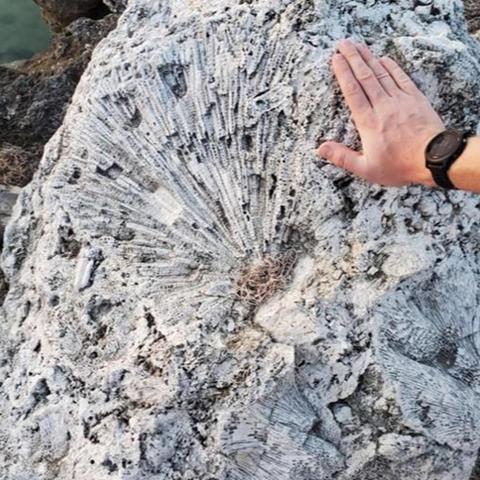The scientists reported their findings, which summarize two years of wastewater and groundwater monitoring data, in the journal ACS ES&T Water. The data were made public as they were collected.
READ MORE: Materials of the future can be extracted from wastewater
READ MORE: Bacterial biotechnology to remove phosphorus from wastewater given funding boost
Many treatment facilities in the Florida Keys perform initial biological and chemical treatment of wastewater and then inject it into shallow wells, less than 100 feet underground. In theory, remaining nutrients like inorganic phosphate would adsorb or stick to the surface of the porous limestone bedrock as the wastewater plume travels in the subsurface before reaching coastal waters, the scientists said.
Wastewater treatment
But Penn State researchers and other groups of scientists have detected potential wastewater contamination in groundwater and nearshore waters, suggesting current wastewater treatment and disposal techniques may be insufficient. Citing previous studies by other researchers and preliminary data from this study led by Penn State researchers, an environmental group sued the city of Marathon, Florida, in 2022, over alleged pollution from shallow wells. The city agreed to settle the lawsuit by transitioning away from the use of such wells.
In 2021, Penn State scientists installed monitoring wells around the injection site of a city of Marathon wastewater treatment facility, and gathered two years of data on nutrients, dissolved ions and human-produced compounds, such as the artificial sweetener sucralose and pharmaceuticals, in groundwater and nearshore waters.
They found the shallow injection process removed more than 90% of soluble reactive phosphorus (SRP), a type of inorganic phosphate. But SRP and sucralose were both detected in nearshore waters, indicating incomplete removal from wastewater, according to the researchers.
Shallow injection
“Our findings suggest the use of shallow injection as a disposal mechanism for treated wastewater should be reevaluated at facilities with large discharge capacities,” said Miquela Ingalls, assistant professor of geosciences at Penn State and corresponding author on the study. “Further analytical and quantitative approaches like the ones we used here may help determine whether wastewater injection can be considered the direct equivalent of a point-source contaminant discharge.”
The Clean Water Act makes it illegal to directly discharge contaminants into fresh water — like sewage spilling from a pipe into a river. But whether something is considered the equivalent of direct discharge is complicated and involves factors like how far the water must travel and the path it takes, the researchers said.
In the Florida Keys, the water travels through bedrock comprising a porous carbonate material made of ancient coral reefs that can bind phosphate to its surface through a process called adsorption.
Remediation mechanism
“The idea is that any remaining phosphate that wasn’t remediated in the initial treatment steps, once they pump it into the ground, will be adsorbed onto the bedrock’s surface and taken out of the solution,” Ingalls said. “We studied how effective this remediation mechanism was by investigating the efficiency and permanence of phosphate adsorption.”
The scientists said about 75% of the SRP was removed from the plume in the first 10 days of transit by adsorption. A slower removal mechanism in which SRP is incorporated into calcium phosphate minerals, like those that make up our bones and teeth, brought the total phosphate removal efficiency above 90%.
The researchers also injected fluorescent green dye to trace the movement of wastewater from the injection well through the array of sampling well sites.
High salinity
Groundwater in the Florida Keys has a high salinity due to its proximity to the ocean and is therefore very dense, the scientists said. When less dense wastewater is injected underground, it quickly buoys back up to the surface.
This is an issue because contaminants or nutrients that were not removed in the initial treatment or adsorbed onto the bedrock may travel directly to nearshore waters along the coastline, the scientists said.
“It’s sort of a confluence of issues because of the geography of the Keys,” Ingalls said. “You have this salty groundwater that causes the less dense wastewater to buoy to the surface. And the Keys themselves are such narrow land bodies that once it returns to the surface, there is very little transport distance before it’s back in the ocean.”
Nitrogen levels
Ingalls said the team is continuing to analyze data collected from the shallow injection wells and is currently focusing on levels of nitrogen — another wastewater pollutant.
“With phosphate, it’s about the chemical binding to the carbonate bedrock,” she said. “With nitrogen, it’s entirely about the microbial communities that live in the subsurface and consume nitrate and other nitrogen species. The reason to study both is because both can have similar negative impacts on clean water. Both can cause eutrophication, which increases algae growth and low-oxygen conditions that are harmful to fragile shallow marine ecosystems.”
Lee Kump, the John Leone Dean in the College of Earth and Mineral Sciences and a professor of geosciences, and Kate Meyers and Megan Martin, who earned their master’s degrees from Penn State in 2023 and 2022, respectively, also contributed to this work.
The U.S. Environmental Protection Agency provided funding for this work.








No comments yet